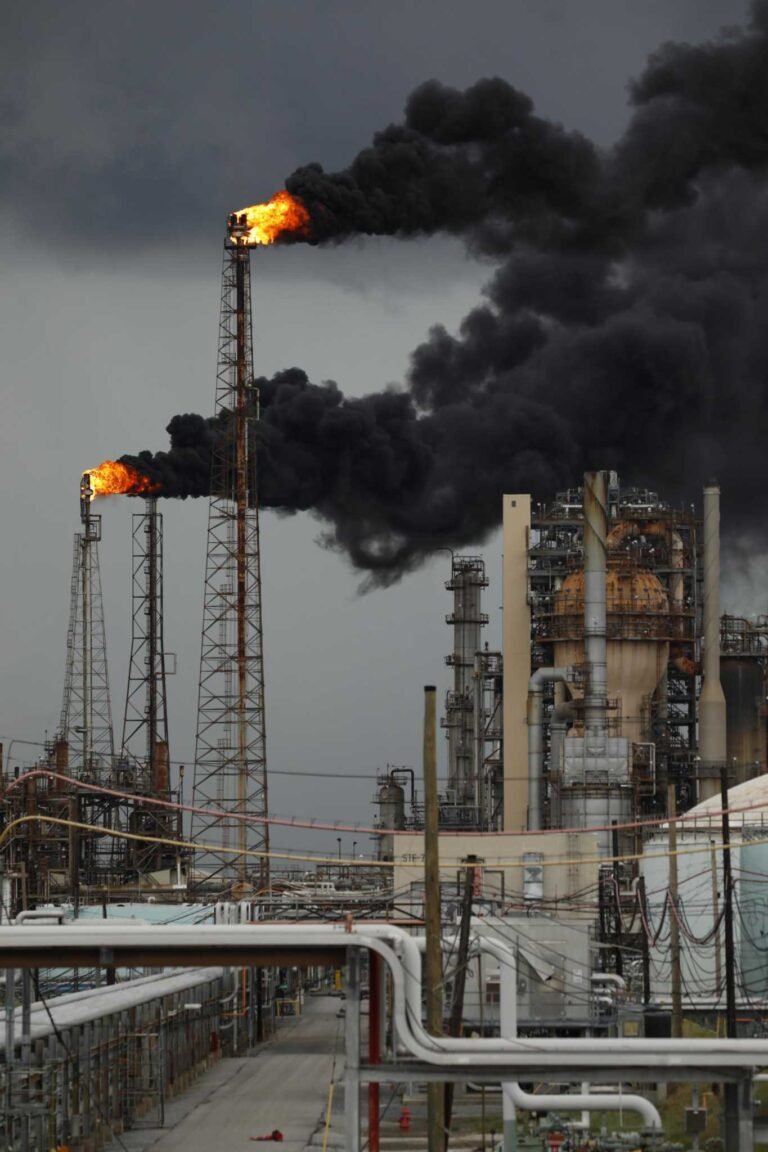
[ad_1]
The oil and gas industry is still reeling from Hurricane Ida nearly two weeks after the Category 4 storm slammed into Louisiana.
About three-quarters of U.S. oil and gas production in the Gulf of Mexico remains offline after Ida forced oil companies to evacuate and shut down offshore platforms. Several refineries and petrochemical plants remain shuttered without power, with no timeline to restart production. Other oil and gas facilities saw extensive damage from Ida’s 150-mile-per-hour winds.
By contrast, less than 10 percent of Gulf oil and gas production remained offline a week and a half after Hurricane Harvey in 2017, according to the Interior Department. Motiva Enterprises, the nation’s largest refinery, restarted production two weeks after Harvey. Even after Hurricane Katrina in 2007, 40 percent of oil production and 60 percent of natural gas production were back online nearly two weeks after the storm.
“The recovery in crude oil production from the U.S. Gulf of Mexico post-Hurricane Ida has been sluggish,” Rystad’s oil markets analyst Nishant Bhushan said. “This is one of the largest hurricane production outages in the U.S. Gulf of Mexico in recent years, and supply has felt it, as Ida’s impact has already surpassed that of Hurricane Katrina.”
Hurricane Ida’s devastation is a harbinger for the oil and gas industry, which faces more disruption to operations as climate change brings about more destructive hurricanes.
With every hurricane, oil companies must order expensive helicopter evacuations from dozens of offshore platforms, move rigs and shut down production. They risk storm damage that could delay restarting operations — or worse, cause oil spills and large emissions of greenhouse gases.
Rystad, a Norwegian energy research firm, estimates U.S. Gulf oil production could fall by as much as 500,000 barrels a day in September as a result of Ida. And hurricane season doesn’t end until Nov. 30.
Last year’s hurricane season — the second most active on record — forced offshore oil producers to curtail about 110,000 barrels per day, the most since 2008. Before last year, hurricanes temporarily halted production on average about 20,000 barrels of oil per day, according to S&P Global Platts.
Hurricanes are costly to companies’ bottom lines. Talos Energy last year experienced 35 days of downtime because of hurricanes, up from its historical average of five to seven days a year. This year, the Houston offshore producer found itself responding to an oil spill, one of 350 reported to the Coast Guard in the aftermath of Ida.
The oil spill was found in an unleased oil field about two miles south of Port Fouchon, La., where Ida made landfall Aug. 29. Talos, which was notified because it was the last leaseholder and operator at the site, said it believes a damaged pipeline left abandoned by a previous company is the source of the oil leak.
“Though we have confirmed our assets are not involved, Talos is committed to establishing containment and control of the release,” said John Spath, Talos’ senior vice president of production operations.
Ida also forced refineries and petrochemical plants to flare, or burn off, excess chemicals before shutting down as a precaution ahead of the hurricane. Royal Dutch Shell said its Norco refinery and chemical plant in St. Charles Parish, La., was burning off more natural gas than usual after Ida, and will likely continue to do so until power is restored to the facility.
Suzanne Lemieux, manager of emergency response policy with the trade group American Petroleum Institute, said hurricanes are among the biggest risks facing the oil and gas industry. But unlike global pandemics, cyberattacks and earthquakes, hurricanes are an annual threat to the Gulf Coast, home to the largest concentration of oil and gas facilities nationwide.
Lemieux acknowledged Ida was one of the strongest hurricanes to hit Louisiana, but dismissed critics who say oil companies are to blame for climate change. Scientists say fossil fuel emissions have contributed to the warming planet, which has intensified hurricanes, wildfires and flooding.
“You can talk about transitioning, but in the current moment, we are still reliant (on fossil fuels),” Lemieux said. “The Energy Information Administration still predicts a significant reliance on these fuels going out several decades so our industry has been working to make sure that we are doing it efficiently and as cleanly as possible, and there’s as little emissions as possible.”
paul.takahashi@chron.com
twitter.com/paultakahashi
[ad_2]
Source link